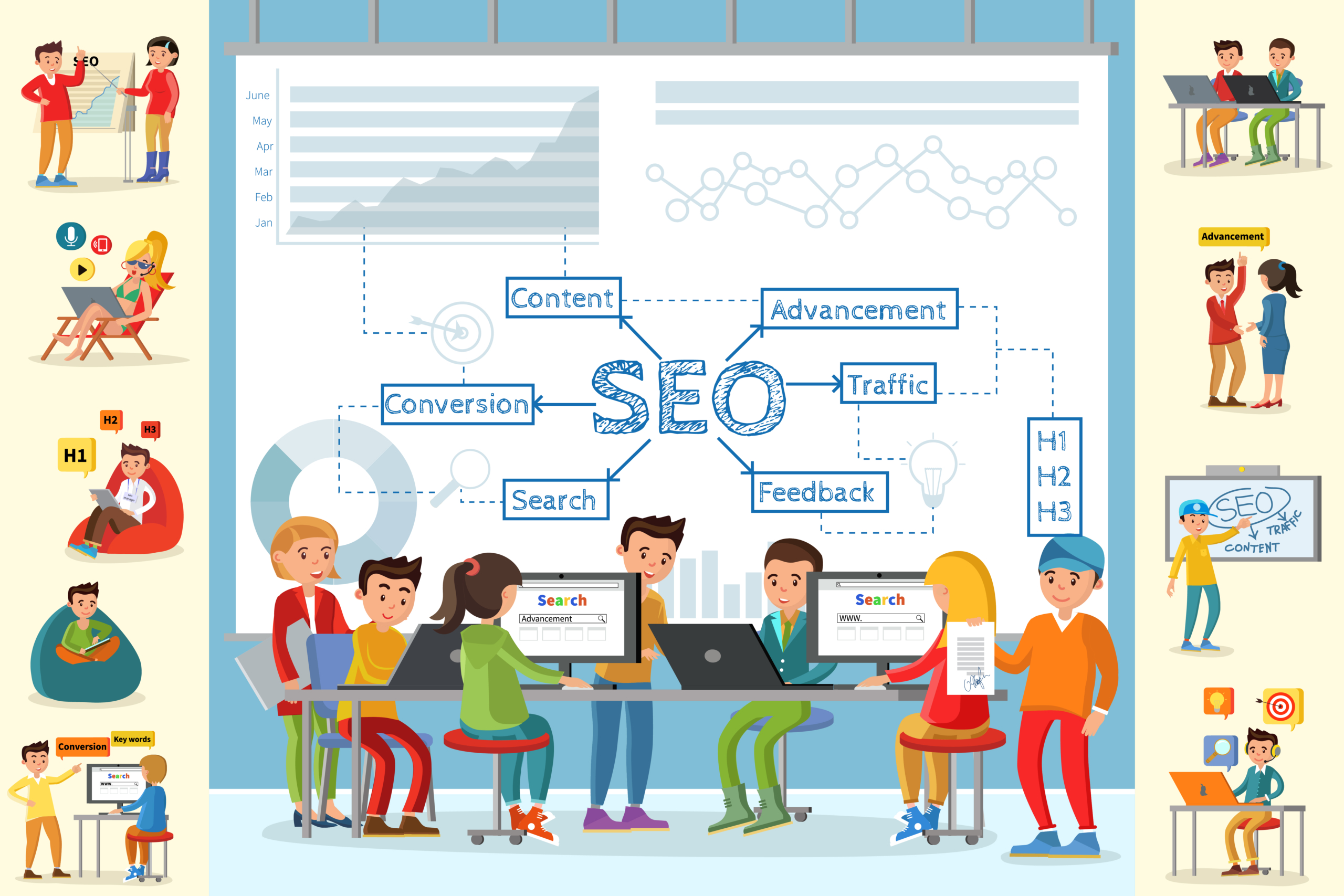Basic Techniques for Improving Your Website’s Visibility
Understanding the Importance of Website Visibility
Website visibility refers to the ease with which internet users can locate a website when searching for relevant information. It is a critical factor in the success of a website, as increased visibility leads to higher traffic and, consequently, more opportunities for engagement and conversion. Websites with low visibility are at a significant disadvantage, as users are less likely to discover them.
Social Media Engagement: A Dynamic Promotion Space SEO and PPC
Search engines utilize complex algorithms to determine the ranking of websites in search results. These algorithms analyze various factors, including keywords, content relevance, website authority, user experience, and backlinks. Websites that effectively optimize these factors are more likely to achieve higher rankings in search engine results pages (SERPs).
The Role of Visibility in Driving Online Success
Visibility plays a crucial role in driving online success as it directly impacts a website’s ability to attract and retain visitors. Increased visibility not only leads to higher traffic, but it also enhances brand awareness, credibility, and potential for conversion. By focusing on improving website visibility through search engine optimization (SEO), content quality, and user experience, website owners can significantly enhance their online presence and achieve greater success.
Conducting Keyword Research
Effective keyword research and utilization play a crucial role in on-page optimization by helping websites create content that aligns with user search intent, attracts targeted traffic, and improves overall website visibility in search engine results.
Identifying Relevant Keywords for Your Website
The foundation of effective as well as basic SEO strategy for any SEO company is choosing keywords that reflect services and resonate with the local audience. Keyword research involves identifying and selecting the most relevant and valuable keywords for a website’s content. These keywords should align with the website’s core topics, products, or services. It’s essential to understand the search intent behind these keywords, as well as their search volume and relevance to the target audience.
Utilizing Long-Tail Keywords for Targeted Traffic
Long-tail keywords are longer, more specific keyword phrases that visitors are more likely to use when they are closer to a point-of-purchase. Utilizing long-tail keywords can help websites attract more targeted traffic and improve conversion rates. These keywords often have lower competition and can generate valuable organic traffic.
Analyzing Keyword Competition and Difficulty
When conducting keyword research, it’s important to analyze the competition and difficulty associated with chosen keywords. Tools like Google Keyword Planner, Ahrefs, or SEMrush can provide insights into keyword competitiveness, search volume, and potential difficulty in ranking for specific keywords. Understanding this data helps in selecting keywords that offer a balance of relevance, search volume, and achievable ranking potential.
Creating High-Quality and Engaging Content
By focusing on creating high-quality content that incorporates these elements, website owners can improve user engagement, enhance their website visibility, and drive organic traffic through search engine results pages.
Crafting Compelling Headlines and Meta Descriptions
Crafting compelling headlines and meta descriptions is essential for attracting users’ attention in search engine results pages (SERPs). A compelling headline should be concise, attention-grabbing, and relevant to the content it represents. It should entice users to click through to the website. Similarly, meta descriptions should accurately summarize the content of the page while also encouraging users to click through by addressing their search intent.
Optimizing Content Structure with Proper Heading Tags
Optimizing content structure with proper heading tags, such as H1, H2, and H3 is one of the basic SEO strategies and is crucial for both user experience and search engine optimization. Clear and hierarchical heading tags improve the readability and organization of content, making it easier for users to consume. Additionally, search engines utilize heading tags to understand the structure and hierarchy of the content, which can impact the website’s visibility and ranking.
Incorporating Multimedia Elements for Enhanced User Experience
Incorporating multimedia elements, such as images, videos, infographics, and interactive content, enhances the overall user experience. Visual and interactive elements not only make the content more engaging and visually appealing but also cater to different learning and consumption preferences. Including alt text for images also contributes to on-page optimization by providing context for search engines and improving accessibility for users.
Implementing Effective On-Page SEO Techniques
By effectively implementing on-page SEO techniques, website owners can improve their website visibility in search engine results pages (SERPs), increase organic traffic, and enhance the overall user experience.
Optimizing Title Tags and Meta Descriptions
Optimizing title tags and meta descriptions is crucial aspect of On-page optimization techniques. Title tags serve as a concise and accurate representation of a webpage’s content. They should include primary keywords and be compelling to encourage clicks from search engine users. Meta descriptions provide a summary of a page’s content and should also incorporate relevant keywords while enticing users to visit the page.
Maximizing Keyword Placement within Content Maximizing
Placing keywords naturally within your content is a must for any well established digital marketing agency in Mumbai like other big cites providing such marketing services and training, ensuring your message is clear to both users and search engines. keyword placement within content involves strategically incorporating relevant keywords in important areas such as headers, subheaders, and body copy. This practice helps search engines understand the topic relevance of the content and can improve the page’s visibility for related search queries. It’s important to maintain a natural and reader-friendly flow of keywords within the content.
Utilizing Internal Links to Improve Page Relevance
Internal linking involves strategically linking to other pages within the same website. This practice helps to establish a hierarchy of information, improve usability, and spread link equity across the website. By using descriptive anchor text that includes relevant keywords, internal links can also enhance the relevance and authority of linked pages in the eyes of search engines.
Implementing Mobile Optimization Techniques
By effectively implementing mobile optimization techniques, website owners can not only meet the demands of mobile users but can also improve their website visibility in mobile search results. Providing a positive user experience across all devices can lead to increased engagement, higher conversion rates, and overall business success in the increasingly mobile-centric digital landscape.
Adopting Responsive Website Design for Cross-Device
Compatibility Responsive website design ensures that a website’s layout and content fluidly adjust to fit the screen size and orientation of any device, be it a desktop, laptop, smartphone, or tablet. This is achieved through the use of flexible grids and layouts, fluid images, and media queries. Responsive design aims to create an optimal viewing experience, providing easy reading and navigation with minimal resizing, panning, and scrolling across devices. By adopting responsive website design, website owners can effectively cater to the diverse browsing habits of users across various devices, ultimately enhancing user satisfaction and engagement.
Optimizing Page Elements for Mobile Users
When optimizing page elements for mobile users, it’s essential to prioritize the delivery of content and streamline the user experience. This involves optimizing images and media to ensure fast loading speeds on mobile devices, as slow-loading content can lead to user frustration and high bounce rates. Additionally, consideration should be given to the design and placement of navigation menus, buttons, and interactive elements to ensure they are user-friendly and easy to interact with on smaller touch screens. Font size, button spacing, and touch-friendly interfaces are important factors to consider in creating a seamless and intuitive browsing experience for mobile users.
Testing and Monitoring Mobile Performance and Usability
Continuous testing and monitoring of a website’s mobile performance and usability are crucial for maintaining a high-quality mobile experience. User testing, such as conducting usability tests with actual mobile users, can identify any pain points or areas for improvement in the mobile user experience. Additionally, tools such as Google’s Mobile-Friendly Test can be used to assess a website’s mobile-friendly status, highlighting areas that may require attention. Monitoring key metrics such as mobile traffic, bounce rates, and conversion rates provides valuable insights into the effectiveness of mobile optimization efforts, allowing website owners to make data-driven decisions to improve the mobile user experience.





There are no comments